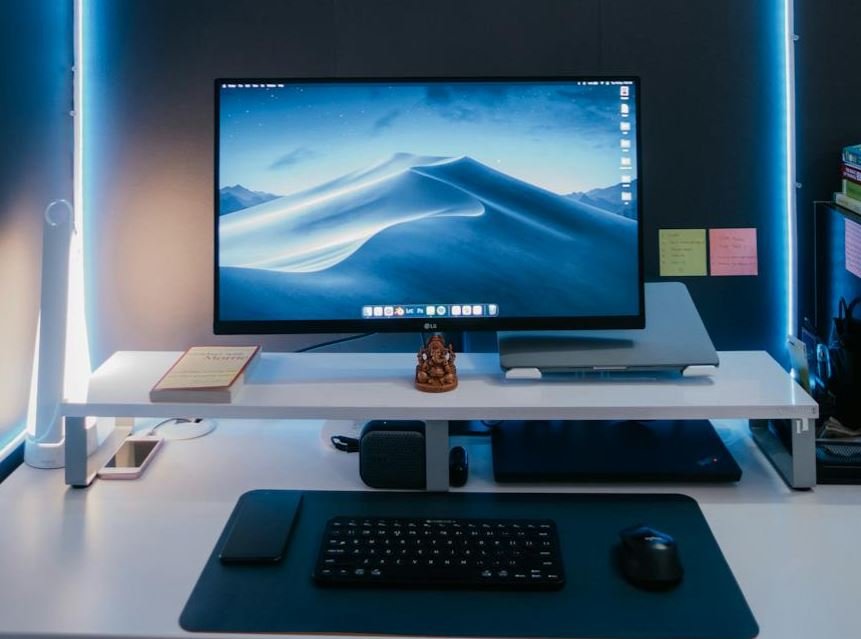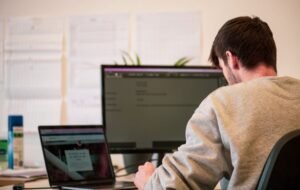AI Art Is Real Art
Artificial Intelligence (AI) has revolutionized various industries, and the world of art is no exception. While traditional art forms have dominated the art scene for centuries, AI art is emerging as a fascinating and controversial genre. It challenges the notion of creativity and raises questions about the role of technology in artistic expression. This article delves into the intricacies of AI art and explores its significance in the contemporary art world.
Key Takeaways
- AI art blurs the line between human and machine creativity.
- Machine learning algorithms enable AI to create unique and original artworks.
- AI art raises ethical and philosophical questions about authorship and artistic intent.
- AI art has gained recognition and is exhibited in renowned galleries and museums.
The real essence of AI art lies in the algorithmic processes that generate the artwork. AI systems, equipped with vast amounts of data and complex algorithms, can learn patterns, mimic styles, and generate original artworks. By analyzing and understanding vast collections of existing art, these algorithms develop their sense of composition, color, and form.
For example, an AI algorithm trained using thousands of paintings by famous artists can generate new pieces that emulate the style of surrealism or impressionism.
In recent years, AI-generated artworks have attracted both praise and criticism. Advocates argue that AI art expands the boundaries of creativity, introducing novel ideas and perspectives. Critics, however, raise concerns about plagiarism, the devaluation of human artists, and the loss of authentic human expression. The debate over the validity and artistic merit of AI-generated art remains ongoing.
The Rise of AI Art
The rise of AI art can be attributed to advancements in machine learning technologies and the availability of large datasets. Machine learning algorithms, such as generative adversarial networks (GANs) and recurrent neural networks (RNNs), play a crucial role in the creation of AI art.
**GANs**, for instance, consist of two neural networks: a generator and a discriminator. The generator creates new artworks, while the discriminator evaluates their authenticity. Through a feedback loop, the AI system learns and improves over time, producing more refined and convincing artwork. RNNs, on the other hand, allow the algorithm to generate sequential art, such as music or interactive visuals.
**Artificial Intelligence researchers and artists** collaborate to push the boundaries of AI art. The intersection between technology and artistic expression leads to groundbreaking creations that challenge our perception and understanding of art.
The Impact of AI Art
AI art has made a significant impact on the art world, sparking conversations and debates among artists, curators, and critics. It has transformed the traditional art landscape by introducing innovative approaches and expanding the possibilities of artistic expression.
Table 1: Examples of Famous AI Artworks
| Artwork | Artist/Algorithm |
|---|---|
| Portrait of Edmond de Belamy | Generative Adversarial Network (GAN) |
| The Next Rembrandt | Deep Learning Algorithms |
| Nightmare Machine | Neural Style Transfer |
AI art has gained recognition in prestigious galleries and museums worldwide. It challenges the traditional notion of art creation, blurring the lines between human and machine-generated works. Artists, institutions, and audiences are continually exploring new ways to engage with AI art.
The Future of AI Art
The future of AI art is both exciting and uncertain. As technology advances, AI algorithms will likely become even more sophisticated, surpassing their current capabilities. This opens up possibilities for new forms of creative expression and collaborations between humans and machines.
- The continued development of AI art could lead to hybrid artworks created collaboratively by humans and AI.
- The ethical implications of AI art, such as copyright, ownership, and authenticity, will require careful consideration.
- AI art could democratize the art world by providing new avenues for individuals without formal artistic training to express themselves creatively.
Table 2: Advantages and Challenges of AI Art
| Advantages | Challenges |
|---|---|
| Expands artistic possibilities | Ethical concerns about authorship |
| Engages new audiences | Lack of original human expression |
| Allows for experimentation | Perception of devaluing human artists |
The evolving relationship between AI and art continues to fascinate and inspire. It challenges traditional notions of creativity and invites us to embrace the ever-changing landscape of artistic expression.
Final Thoughts
AI art is evolving and reshaping the way we perceive and create art. While opinions on its authenticity and artistic value may vary, there is no doubt that AI art is real art. It challenges our preconceived notions and opens up new possibilities for human-machine collaborations.
Through its unique blend of technology, creativity, and exploration, AI art has established itself as a significant force in the contemporary art world. As AI continues to grow and evolve, we can expect AI art to push the boundaries and redefine what it means to be an artist.

Common Misconceptions
AI Art is Not Created by Humans
One common misconception about AI art is that it is not created by humans. However, it is important to understand that AI artists are not standalone entities that generate art on their own. Instead, the technology serves as a tool in the hands of human artists, who train the AI algorithms and guide the creative process.
- AI art is a collaboration between humans and machines
- Human input and guidance play a crucial role in AI art creation
- AI algorithms cannot create art without initial human training
AI Art lacks Emotional Depth
Another misconception about AI art is that it lacks emotional depth. While it is true that AI algorithms do not possess emotions like humans do, they can still produce art that evokes emotions. The beauty of AI art lies in its ability to provoke an emotional response, whether it is awe, inspiration, or curiosity.
- AI art can evoke emotions despite lacking emotional consciousness
- AI algorithms are trained on vast data sets to capture emotional nuances
- Viewers can experience emotion when interacting with AI-generated art
AI Art is Just a Technological Gimmick
Some people perceive AI art as just a technological gimmick without true artistic value. However, this viewpoint overlooks the artistic vision and intention behind AI-generated works. Just like any other art form, AI art is a medium of expression and a reflection of human creativity.
- AI art possesses artistic value and creative intent
- AI artists use technology as a medium to express their ideas
- AI-generated artworks can be thought-provoking and meaningful
AI Art is Repetitive and Lacks Originality
Some people believe that AI art is repetitive and lacks originality, as the algorithms might produce similar patterns or styles. While it is true that AI algorithms learn and draw inspiration from existing data, AI artists employ various techniques to ensure uniqueness and diversity in their creations.
- AI artists incorporate randomness to introduce unpredictability
- AI algorithms can generate diverse styles and subject matters
- AI art is influenced by but not confined to existing artworks
AI Art Will Replace Human Artists
Lastly, a common misconception is that AI art will replace human artists completely. However, AI technology should be seen as a complement to human artistry rather than a substitute. It aids artists in exploring new creative possibilities and can serve as a source of inspiration and collaboration.
- AI art and human artistry can coexist and complement each other
- AI tools enable artists to explore novel artistic territories
- Human artists can utilize AI technology as a creative partner

The Rise of AI-Generated Art
Artificial Intelligence (AI) has revolutionized various industries, and the art world is no exception. AI algorithms have been trained to create stunning and imaginative art pieces that challenge traditional notions of creativity and human expression. In this article, we explore the impact of AI-generated art and showcase ten captivating examples that demonstrate the remarkable capabilities of this emerging art form.
1. “Portrait of Edmond de Belamy”
This AI-generated artwork was sold at an auction for $432,500 in 2018 by Christie’s, making it the first-ever AI artwork sold by a major auction house. The algorithm behind the piece was created by the art collective Obvious, and it utilized a Generative Adversarial Network (GAN) to produce the painting.
2. “The Next Rembrandt”
Inspired by the works of the Dutch Master, this AI-generated portrait mimics Rembrandt’s unique style and technique. A team of data scientists, engineers, and art historians analyzed data from Rembrandt’s existing paintings to create an algorithm that could generate a new portrait in his distinctive manner.
3. “Sunset on Mars”
This breathtaking artwork was created by Janelle Shane, a research scientist. The AI algorithm she developed was trained using images from NASA’s Mars rovers, and it learned to generate realistic Martian landscapes with vibrant colors and awe-inspiring realism.
4. “Universe Within”
Combining the creativity of AI with scientific data, this artwork visualizes the intricate patterns and structures found within biological cells. The AI algorithm was trained on thousands of microscopic images, allowing it to generate mesmerizing representations of cellular components.
5. “Melange of Dreams”
AI-generated art can also bridge the gap between different artistic styles. “Melange of Dreams” blends elements of Impressionism, Cubism, and Surrealism to create a truly unique and visually captivating composition. The AI algorithm behind this piece was trained on a diverse dataset of paintings from various art movements.
6. “Symphony of Colors”
This vibrant artwork explores the harmonious interplay of colors in a mesmerizing visual symphony. The AI algorithm employed in its creation was trained on a vast database of color palettes, enabling it to generate stunning combinations that evoke emotions and captivate the viewer.
7. “Urban Reflections”
AI-generated art can reimagine urban landscapes in captivating and unexpected ways. “Urban Reflections” uses a deep learning algorithm to generate a hyper-realistic depiction of a city skyline, complete with reflections in water and a play of light and shadows that adds depth and dimension.
8. “The Essence of Music”
By analyzing musical patterns and compositions, AI algorithms can translate the dynamics and emotions of music into striking visual representations. “The Essence of Music” creates an abstract portrayal of a symphony, with each brushstroke representing a musical note or chord.
9. “Nature’s Symphony”
AI-generated art can capture the beauty and intricacies of the natural world. “Nature’s Symphony” combines elements from various natural elements, such as flora and fauna, to create a visually stunning composition that celebrates the diversity and harmony found in nature.
10. “Dynamic Duality”
This AI-generated artwork plays with the concept of duality, juxtaposing contrasting elements to create a visually intriguing composition. The AI algorithm behind this piece was trained on a dataset of abstract art, allowing it to generate complex and thought-provoking visual arrangements.
The integration of AI into the art world has sparked debates about the role of AI in human creativity and the definition of art itself. While traditionalists may argue that AI-created art lacks the emotional and intellectual depth of human-made art, the undeniable technical skill and aesthetic appeal of AI-generated art are reshaping the artistic landscape. As AI algorithms continue to evolve and push the boundaries of creativity, we can expect to witness even more astonishing and boundary-breaking art in the future.
Frequently Asked Questions
What is AI art?
AI art refers to artwork created with the assistance or intervention of artificial intelligence. It involves the use of algorithms and machine learning techniques to generate or enhance artistic creations.
How does AI art work?
AI art typically involves feeding a machine learning model with a large dataset of existing artworks. The model learns patterns, styles, and techniques from these examples and can then generate new artwork based on this learned knowledge.
Is AI art considered real art?
Yes, AI art is considered real art. While the process of creating AI art may involve algorithms and machine learning, the final output is still a creative expression produced by an artist. Just like any other form of art, AI art can evoke emotions, challenge viewers, and contribute to the artistic discourse.
Can AI art replace human artists?
No, AI art cannot replace human artists. While AI can assist in the creation of artwork, it lacks the human experience, emotions, and unique perspectives that make art distinctly human. AI art should be seen as a tool that can enhance and complement human artistic abilities, rather than replace them.
Are there ethical concerns with AI art?
Yes, there are ethical concerns associated with AI art. One concern is the potential for plagiarism, as AI algorithms can mimic existing artistic styles. Another concern is the question of authorship, as AI systems can create artwork without direct human intervention. Additionally, issues related to ownership, attribution, and fairness may arise.
What are the benefits of AI art?
AI art brings several benefits to the art world. It allows artists to explore new techniques and styles by collaborating with AI algorithms. It can also help artists in generating ideas, enhancing their creative process, and experimenting with different possibilities. Additionally, AI art has the potential to create new forms of art that were previously unimagined.
Can AI art be considered original?
AI art can be considered original, albeit with some caveats. While AI algorithms learn from existing artworks, they can generate unique compositions, combinations, and interpretations. However, the question of originality becomes complex when considering the role of the AI system as a tool and the level of human intervention in the artistic process.
How does AI art impact the art market?
AI art has the potential to disrupt the art market in various ways. It can challenge traditional notions of authorship and the value associated with human-created art. It may also affect art pricing and valuation, as the supply of AI-generated art could be virtually unlimited. Additionally, AI art may require new frameworks for copyright, licensing, and ownership.
Can AI art inspire creativity in humans?
Yes, AI art can inspire creativity in humans. By showcasing new possibilities and pushing the boundaries of what is considered art, AI-generated creations can challenge artists to think differently and explore novel approaches. AI can act as a source of inspiration and a tool that artists can incorporate into their creative process.
Where can I experience AI art?
AI art can be experienced at various venues, such as art exhibitions, museums, online galleries, and art festivals. Additionally, many artists and AI researchers share their work on platforms like social media, websites, and specialized AI art platforms.




